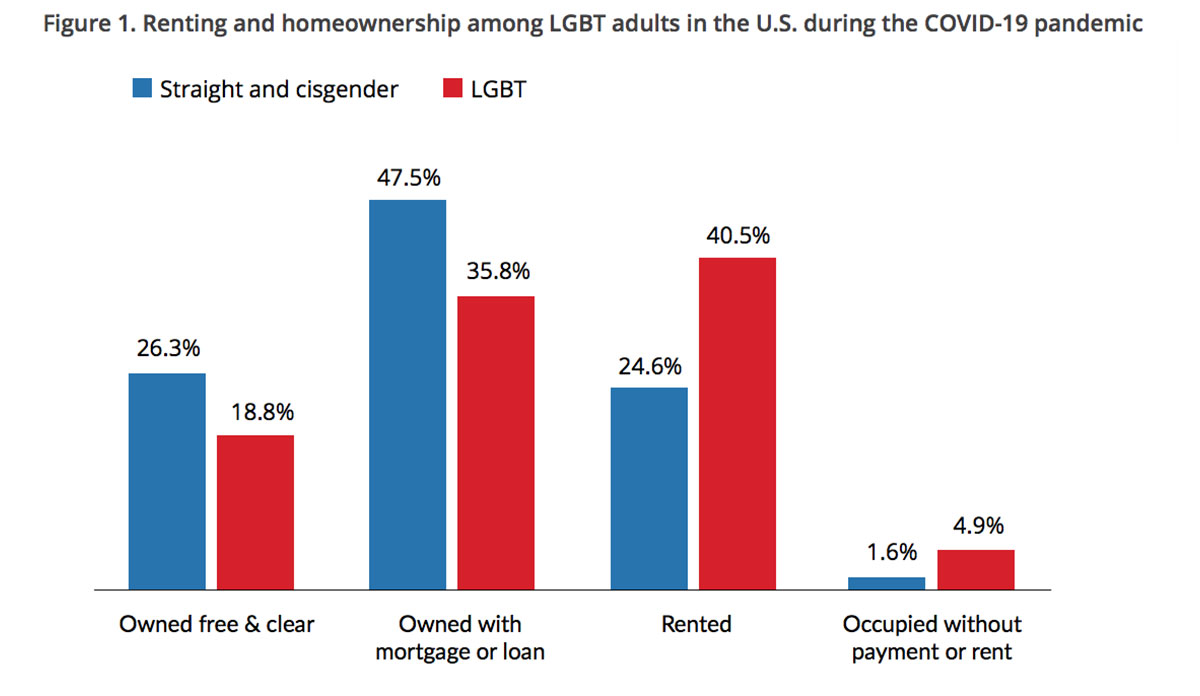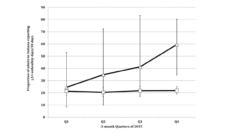How many paychecks separate you from becoming homeless? From April 2020 through July 2020 in the first months of Covid-19 pandemic, an average of one-in-three renters experienced housing insecurity each week. The federal government addressed this problem through the Coronavirus Aid, Relief, and Economic Security (CARES) Act, which temporarily protected people’s housing through a moratorium on evictions, rent and mortgage relief, and distributed funds for rent assistance. Following CARES, the CDC enacted an eviction ban that ended in August 2021.
Bianca Wilson and colleagues wrote a policy brief analyzing the eviction risk faced by LGBT renters due to the pandemic. They used Household Pulse Survey data to examine the threats of rental stability. A key component of housing stability depends on if a person rents or owns. Renters are more likely to be low-wage workers and concentrated in industries undermined by the pandemic. Renters are competing over a decreasing stock of housing options and at the mercy of landlords who can raise their rent because demand is so high.
The graph provides a snapshot comparing home ownership between LGBT and cisgender straight individuals. Nearly three quarters of cisgender straight individuals were home owners either free and clear or with a mortgage compared to half of LGBT-identifying persons. There were more LGBT-identifying renters than cisgender straight renters (40.5% and 24.6% respectively). With more LGBT-identifying individuals being renters, LGBT renters were at higher risk of housing insecurity with the lifting of the eviction moratorium. In the weeks following the end of the moratorium in August 2021, eviction filings in cities began rising—affecting as many as 56% or all renters.
Databyte via Wilson, B. D. M., O’Neill, K. K., & Vasquez, L. A. (2021). LGBT renters and eviction risk. Los Angeles: The Williams Institute, 2021.














